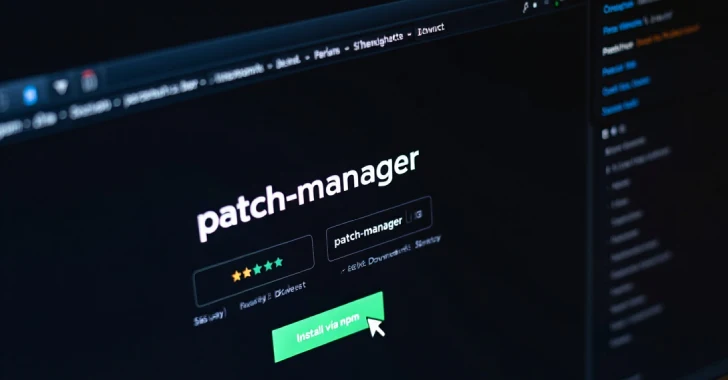
AI-Generated Malicious npm Package Drains Solana Funds from 1,500+ Before Takedown
The AI-Generated Threat: When Code Becomes a Cryptocurrency Thief
The digital frontier is constantly reshaped by innovation, but with every powerful new tool comes the potential for misuse. Artificial intelligence, while revolutionizing countless industries, is now demonstrating its capability to augment malicious actors, creating highly sophisticated and deceptive cyber threats. A recent incident involving a malicious npm package serves as a stark warning: AI-generated code is no longer a theoretical threat but a practical danger to digital assets and supply chain integrity. This report details how an AI-crafted npm package successfully siphoned Solana funds from over 1,500 victims before its eventual takedown, highlighting critical vulnerabilities in our digital ecosystems.
Anatomy of the Attack: The @kodane/patch-manager Deception
On July 28, 2025, a new package surfaced on the npm registry: @kodane/patch-manager. Uploaded by a user identifying as “Kodane,” the package presented itself as a legitimate utility, promising “advanced license validation and registry optimization utilities for high-performance Node.js applications.” This seemingly innocuous description was a cunning ruse designed to lure unsuspecting developers. Cybersecurity researchers quickly flagged the package, identifying it as a sophisticated cryptocurrency wallet drainer – a direct product of AI generation.
The deception lay in its ability to mimic legitimate functionalities while secretly embedding malicious code. The package’s AI-generated nature likely contributed to its convincing appearance and subtle integration of the draining mechanism, making it difficult for automated scanning tools to immediately flag it as hostile. This incident does not yet have a specific CVE assigned due to its nature as a malicious package rather than a software vulnerability, but it underscores a critical supply chain risk.
The Modus Operandi: Solana Fund Drainage
The primary objective of @kodane/patch-manager was clear: to compromise Solana wallets. Once integrated into a developer’s project, the malicious code within the package would stealthily interact with the user’s system, identifying and exfiltrating private keys or initiating unauthorized transactions from connected Solana wallets. This operation was designed to be swift and silent, allowing the attackers to drain funds rapidly from compromised accounts. The scope of the attack was significant, impacting over 1,500 victims and resulting in substantial financial losses before the package was identified and removed from the npm registry.
This method of attack exploits the implicit trust developers place in open-source package repositories. When a developer installs an npm package, they are essentially integrating external code directly into their application, often with elevated permissions. This trust model, while foundational to rapid software development, presents a significant attack vector for supply chain attacks.
The AI Factor: A New Dimension of Threat Generation
The most alarming aspect of this incident is the direct involvement of artificial intelligence in generating the malicious package. Traditional malicious package creation often involves manual coding or template modification. The use of AI, however, introduces several concerning capabilities:
- Enhanced Obfuscation: AI can generate highly complex and varied code, making it more challenging for static analysis tools and human reviewers to identify malicious patterns.
- Rapid Prototyping of Malware: AI can accelerate the development of new malware variants, adapting quickly to defensive measures.
- Mimicry and Deception: AI’s ability to process vast amounts of data allows it to generate packages that expertly mimic benign alternatives, including documentation and code structure.
- Scalability of Attacks: Automated generation of malicious packages could lead to a significant increase in the volume and sophistication of supply chain attacks.
This incident exemplifies a shift in the cybersecurity landscape, where AI moves from being a defensive tool to an offensive accelerant for cybercriminals.
Remediation Actions and Proactive Defenses
Protecting against sophisticated AI-generated threats requires a multi-layered approach that emphasizes vigilance, robust security practices, and advanced tooling.
For Developers and Organizations:
- Prudent Package Consumption: Exercise extreme caution when incorporating third-party npm packages. Prioritize packages from reputable authors with strong historical reputations and active maintenance.
- Dependency Auditing: Regularly audit your project dependencies using tools that scan for known vulnerabilities and suspicious behavior.
- Software Supply Chain Security: Implement robust supply chain security practices, including cryptographic signing of packages and verifying package integrity upon download.
- Principle of Least Privilege: Run development environments and build processes with the minimum necessary permissions to limit the blast radius of a compromise.
- Security Awareness Training: Educate development teams on the latest supply chain attack vectors and best practices for secure coding and dependency management.
For Repository Maintainers (npm, etc.):
- Enhanced Automated Scanning: Invest in and deploy advanced AI-powered static and dynamic analysis tools capable of detecting subtle anomalies and malicious intent in newly uploaded packages.
- Behavioral Analysis: Implement systems that monitor package behavior post-publication, flagging suspicious network calls, file system interactions, or resource consumption patterns.
- User Vetting and Reputation Systems: Develop more rigorous vetting processes for new users and incorporate strong reputation scoring for package authors.
- Rapid Takedown Procedures: Establish and streamline procedures for quickly identifying and removing malicious packages from repositories.
Relevant Tools for Detection and Mitigation
Leveraging appropriate tools is crucial for both proactive protection and rapid incident response.
| Tool Name | Purpose | Link |
|---|---|---|
| npm audit | Identifies known vulnerabilities in project dependencies. | https://docs.npmjs.com/cli/v9/commands/npm-audit |
| Snyk | Automated security analysis for vulnerabilities in code, dependencies, and containers. | https://snyk.io/ |
| Dependabot | Automatically updates dependencies and creates pull requests for security fixes. | https://docs.github.com/en/code-security/dependabot/dependabot-security-updates/about-dependabot-security-updates |
| Software Bill of Materials (SBOM) Tools | Generates a list of open-source and commercial components in a software application. | OWASP CycloneDX (example) |
| Container Security Scanners (e.g., Trivy, Clair) | Scans container images for vulnerabilities in dependencies and configuration. | Trivy (example) |
Looking Forward: The AI Arms Race in Cybersecurity
The incident involving @kodane/patch-manager serves as a critical inflection point. AI’s capabilities for generating sophisticated malicious code will only grow. This necessitates a proactive and adaptive approach from the cybersecurity community. Defenders must leverage AI and machine learning to build more robust detection, analysis, and prevention systems that can keep pace with AI-powered adversaries. The future of cybersecurity will increasingly resemble an AI “arms race,” where the strategic application of advanced technology will determine the advantage. Organizations and individuals alike must prioritize supply chain security and maintain heightened vigilance against evolving AI-generated threats to safeguard their digital assets.





